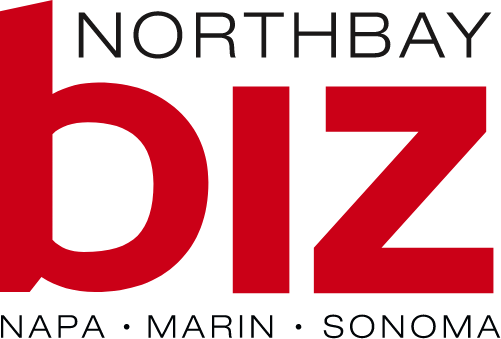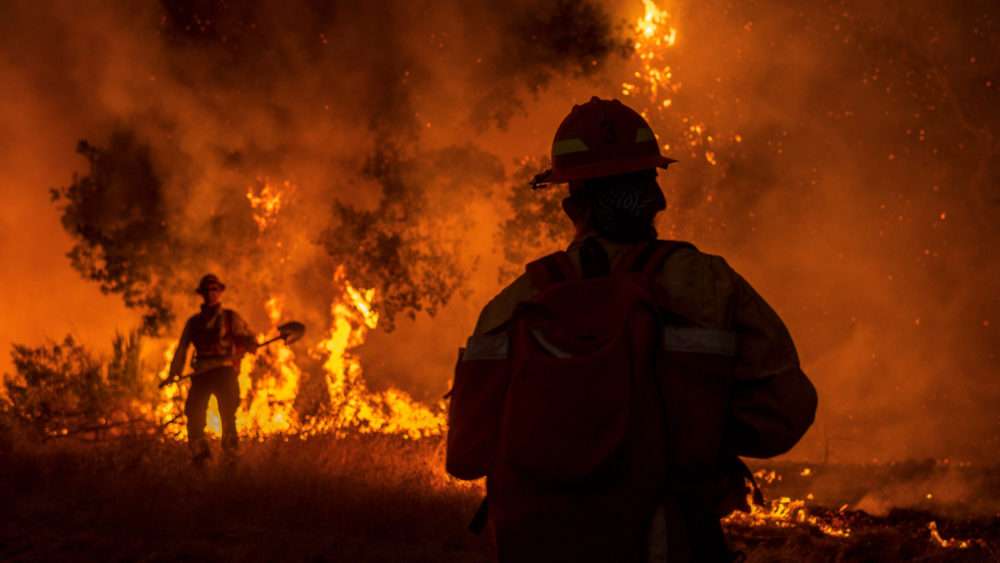SSU is preparing students to address real life environmental challenges with real world solutions.
I remember the thrill of building my first house. There was the satisfaction of driving a nail straight, lining up “sticks” (2x4s)—parallel when they were meant to be parallel, perpendicular when they were meant to be perpendicular (at least that was the idea)—and laughing at the incongruity of my very precise carpenter sensei Patrick, when something was just a teensy bit off, saying, “Ah, you’ll never see it from a galloping horse!”
There is, happily, nothing at all incongruous about the Environmental Technology Center (ETC) at Sonoma State University (SSU), a building that houses SSU’s Center for Sustainable Communities (CSC), which is, naturally, a part of the university’s Environmental Studies and Planning department (ENSP). Got all your acronyms lined up and in order?
Here’s the important part: The ETC is a building that was designed to be a living classroom of green building techniques and sustainable community planning. “The building was opened in 2001, and we fondly refer to it as ‘the building that teaches,’” says researcher Sascha von Meier, the professor who teaches SSU’s energy management and design courses (and has primary responsibility for the ETC).
The old ways
“Passive solar heating is an important part of the building’s design,” says von Meier, an avid rock climber who was born in New Jersey but raised in Germany. “We get solar gain indirectly just from the light that comes in through the windows and the trombe walls [thick, masonry walls that face the sun] that work to absorb solar radiation. The walls are a black color, but also use a material that prevents the heat from radiating back out. You can really see it with an infrared camera.” She explains that the material is a film that’s applied to the outer surface of the brick walls, underneath a layer of glass.
“A lot of the techniques used in the ETC are now becoming standard in new, green buildings, but they were quite innovative a decade ago. Aside from bringing that heat in, you also have to pay close attention to your insulation—to keep that heat in—and also to making sure there’s no air leakage. That’s an easy way to lose the heat you’ve gained.
“We also employ passive solar cooling, which sounds like a misnomer, I know. We have no active air conditioning in the Environmental Technology Center. In the summertime, we use what’s called ‘nighttime flushing’ to evacuate the warm air and bring in the cool air. Computers automatically open the clerestory windows [near the roofline]. This takes fullest advantage of our local weather patterns that, thankfully, include nighttime cooling, unlike much of the South or the East Coast. Warm air rises, right? Basic physics. The thermal mass of the building itself—with the concrete, the bricks, the rammed earth—retains heat rather well, which is great in the winter. But in the summer, you want things a little cooler, so by flushing out the heat overnight, you can keep the thermal mass cool. The building acts a lot like a battery, storing and releasing the heat, but changing temperature at a fairly slow rate. This system is really a lot like what native peoples employed thousands of years ago in their cliff dwellings and in their adobe structures. It’s low-tech, and it’s very effective in a dry climate.”
She notes that the ETC does have a backup heating system in place. “It’s a hydronic system, with water piped through the concrete flooring. Those 8 a.m. classes can get a little cold in the wintertime if we haven’t turned on the systems at 5 a.m.”
Much of the classroom lighting comes through “daylighting,” making maximum use of skylights and double-paned windows that let light and heat in when desired—and keep it in. “North-facing skylights let an enormous amount of light in,” says von Meier. “It’s important to note that reflected light also gives you the best possible diffusion of that light. Window placement is the key. The windows are insulated, double-glazed, and we include outside shading [awnings] to prevent overheating when it gets overly warm outside. While you can use inside shades, outside shades are far more effective in reducing heat impact when that’s the goal. That’s not to say you can’t use interior Venetian blinds or louvers; they’re just not as effective in controlling heat.”
She also points to the lovely, ancient means of putting up a trellis with a deciduous plant, one that has leaves in the summer for shade and discards those leaves in the winter when you’re more concerned with light and heat gain. “In an age when fossil fuels were cheap, we could afford to be lazy and give up on those old technologies that were simple, yet effective. We’ve become a bit soft, don’t you think? I mean, how hard is it to get up and open or close the shades by hand? Plus, you get a little exercise in the process!
“We’re also employing photovoltaic cells on the roof for electricity. It’s not the most efficient system, but our roof space is quite large in proportion to the classroom space inside, so it’s effective enough for our purposes. And we can operate all of our energy needs from a computer or a smartphone. It’s pretty amazing. In the long run though, the low-tech answers are far more effective and cost accountable.”
Recycled professors?
Alex Hinds is the interim director of SSU’s Center for Sustainable Communities, which is housed in the ETC. He also oversees and instructs in a certificate program for the new Sustainable Development and Climate Change program and for the existing Green Building program (in collaboration with the School of Extended Education).
“Part of my job at the CSC,” Hinds says with a laugh, “is to bring ‘recycled professionals’—retired experts in their fields—into contact with our students to further broaden their academic experience and help them be prepared to make a difference in the real world.”
Hinds (the “i” is long) is himself a recycled professional, having retired from a career in community planning and development. Born in Shaker Heights, Ohio, in 1947, his family moved to Phoenix, Arizona, when he was nine. His college years were spent in Boulder, Colorado; Honolulu; and San Diego County. “I was a wrestler in college,” he notes. “Wrestling is good preparation for working with local governments: It teaches you to be light on your feet and to build endurance, which helps when working for the long haul.
“Much of what we’re doing here at the Environmental Technology Center—and through the Center for Sustainable Communities—is trying to apply ecological principles to our daily lives. In Hawaii, where I finished my undergraduate degree, it was fascinating to see how rural development worked in the tropics, and how organic farming could be both sustainable and profitable. It’s marvelous that these ideas are now at the forefront.”
After finishing school in Hawaii, Hinds managed an avocado grove near Escondido, California, earned his master’s degree, spent a Fulbright year in the Ecuadorian Amazon, and then began his career in public service as an assistant planner for El Centro, California (east of San Diego). Subsequent stops included planning director jobs in San Luis Obispo, Lake County and Marin County. At the last he was responsible for Marin County’s general plan update that was the first in the nation to calculate the municipal ecological footprint and investigate the effects of climate change on that footprint. (That plan—and the sustainability program that arose from it—earned Hinds’ team both statewide and national awards from the American Planning Association.)
“We worked with the Global Footprint Network, a nonprofit that helps local communities calculate and assess their ecological footprint. It’s a reality check to see and be aware of what’s happening in our own backyards. Climate is, of course, a major thread in the conversation, and reengineering and conservation are a major response to the problems engendered by our rising consumption levels. Holding classes in the ETC helps students see and understand the breadth and depth of the problem in a real-time setting. When we can integrate the issues, it really changes the conversation as to what stewardship of the land and of our community can bring to the table. The ETC is a vital part in getting to the point where we can change our consumption patterns and develop more efficient energy use plans.”
Hinds clearly loves working with students. “Working with the kids and my peers, there’s a palpable enthusiasm for trying to provide sustainable strategies for the community. All the hands-on work here really helps. So, not only do we offer training—especially through our new and existing certificate programs—but we also offer technical assistance to the community at large, from local and state governments to businesses that are interested in creating systems that will sustain themselves.
“You don’t have to look all that far to realize how blessed we are to live in a county that’s so attuned to the good life, from the bike trails to the local food and wine experience. This is a place where outdoor activities and the environment come together so beautifully. It’s an extraordinary place to live.”
Back to the land
Professor Thomas Jacobson, JD, is the chairman of the Department of Environmental Studies and Planning at Sonoma State University. Jacobson, who holds a K-through-nine teaching credential, is a graduate of UC Hastings College of Law (with a concurrent masters degree in city planning). After working as an attorney in land use and environmental law for McCutchen, Doyle, Brown and Enersen for nearly a decade and teaching at the University of San Francisco’s School of Law, he came to Sonoma State University to teach environmental, land use and planning law. He’s keenly focused on issues of land use impact assessment, growth management and planning that hones in on sustainable communities.
“With the Environmental Technology Center, working with sustainable materials isn’t limited to the building itself,” notes Jacobson, the former grade school teacher (“a one-room schoolhouse out in the wilds of Sierra County”). “The garden area actually pre-dates the building, and our agroecology classes and other garden activities make good use of the entire landscaped area around the building as an equal classroom-laboratory.
“Sustainable gardening and food production is a vital part of the equation for sustainable life, and the big question is, what’s the future going to hold for us in an era of limited resources? Also, what opportunities is this question going to bring forth? Because whenever there are challenges, there are also opportunities built-in. Working with lower water use is one avenue of exploration, and expanding local and organic food production is another. Water quality is, of course, always of prime concern to the city, the county, the state and onward.”
Born in Cincinnati but raised in Southern California, Jacobson is a lifelong Dodger fan. He started college at UCSB, but finished his degree at Sonoma State, taught school for seven years then, in a major reevaluation of his life, attended law school at the University of California/Hastings. “Whether you ever practice law or not, it’s a fascinating education, teaching you to think more logically and write more precisely.”
Thus it’s no surprise that Jacobson is also the author of seven books, including The Basics of Land Use Planning in California and Healthy by Design: A Public Health and Land Use Planning Workbook. The latter (a collaboration with Sonoma County planning directors, Department of Health Services, the Agricultural Preservation and Open Space District, and SSU student assistants) dives into issues unabashedly, initially asking how general plans in Sonoma County have addressed public health issues, from open space and recreational issues to access to healthy food, air quality and health care. “We point out the success stories,” says Jacobson, “from walkable communities and bicycle access to developing community gardens, facilitating senior’ access to community services, creating vibrant parks and improving youth health. And we cite the good work of other communities in Northern California. We also list resources that can be accessed to further improve our local lot—especially our health—in the areas cited above.”
In the book’s introduction, Jacobson points out, “Obesity has been recognized as a leading public health problem and a significant contributor to a number of chronic diseases, including some cancers, cardiovascular disease and diabetes. In the past 30 years the prevalence of overweight and obese adults and children has increased significantly. Sonoma County is in step with the state and national trends. The number of Sonoma County adults (ages 18 years and older) who are obese doubled from 14 percent in 2001 to 28 percent in 2007 (according to the California Health Interview Survey). Compared to the general population, youth from low-income households are at higher risk for both overweight and obesity.” The workbook focuses on how land use planning can contribute to improving health through reducing obesity and chronic disease.
In doing so, the authors emphasize social equity concerns. “Cutting across the various sections of the workbook is consideration of social equity as it relates to the land use planning/public health connection. Lower income communities may be especially vulnerable to certain health problems related to their environments. Conversely, those communities can benefit from policies and programs focused on improving these environmental factors.
“Examples of these factors include greater exposure to air pollution, less access to parks and open space as resources for outdoor recreation, and less access to healthy, affordable food. These conditions are risk factors for a number of chronic diseases, such as asthma, diabetes, cancer, heart disease and stroke.” The bottom line, they suggest, is pretty straightforward: If you can improve the social and physical environment of a neighborhood, the health of that neighborhood is immeasurably improved.
Which, of course, brings us back to the Environmental Technology Center, the building that teaches. The research, the outreach, the training, the lessons are all there for the learning. Jump on in, the water’s fine.
The author of nine books, Hinkle enjoyed building his own house and is an advocate for better business writing. You can view his work at RichardPaulHinkle.com.



